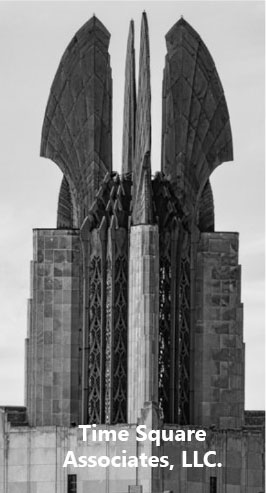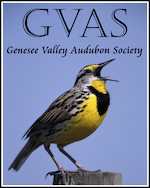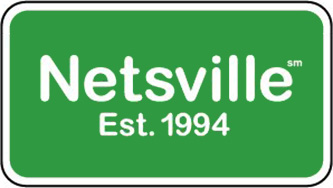Courtship, Mating, & Nest Preparation
Late winter and early spring brings the return of the falcons to the nesting territory they have occupied since Mariah settled in Rochester over a decade ago. Where were they over the winter? Only they can know for sure, and the falcons aren’t talking.
Peregrines are creatures of habit. Like tony jet-setters with expensive apartments and high-rise condos scattered through midtown Manhattan, wild Peregrines typically select two or three nest sites within a given territory, and move among them from year to year. Mariah bucks this trend, as do many of her urban-dwelling cousins. It turns out that the nest boxes set up by their human benefactors on the tops of buildings, smokestacks and other lofty structures are so ideally placed that there’s little need to wander around– a bit of a contradiction for a bird whose name means “wanderer”.
Mariah and Kaver have been tearing up the skies over downtown Rochester, but surprisingly they spend a considerable amount of time not flying, in the rather boring, but no doubt important task of perching near the nest site. It’s their way of staking claim to the territory, and letting others know that there’s no room at the inn. They’ve even been seen escorting other Peregrines out of the area since their return in late February. So Step 1, Reclaiming the Territory, is complete.
Time for Step 2: Courtship
Peregrines mate for life. There are exceptions to that rule, but we won’t concern ourselves with that for now. Since Kaver’s arrival in 2002 (he replaced Cabot-Sirocco, who failed to return that year) he’s been Mariah’s constant companion. Scientists and other smart people who study Peregrine behavior think that this fidelity has as much to do with the birds’ affinity for a particular territory as it does with their affininty for each other. So every year, we find the Peregrines re-establishing their bond through a complex set of ritualistic courtship behaviors. The male makes bold aerobatic flights that might include loops, tight turns, and swooping dives.
Like a teen with a flashy sports car, he’s trying to impress her with his speed and agility. If she likes what she sees, the male starts coming around with gifts– not flashy jewels, but something even more precious to a female falcon– food. By bringing food, Kaver demonstrates his hunting prowess, assuring Mariah that he’ll be a good provider for her family.
If she accepts the food, the falcons will meet in the nest box for another ritual. This time, the birds face each other and take turns bowing– a very polite way of courting. This is their talk time, too. While they’re bowing Peregrines vocalize with a series of gentle sounds called “ee-chupping”.
On to Step 3: Mating
As with humans, mating isn’t just a way to procreate. Peregrines’ mating activity also establishes and reinforces the relationship, what experts call the “pair bond”. Mating activity for Peregrines may take place many times each day. In fact, watchers in Rochester have seen Mariah and Kaver mating as often as every half hour!
Mariah initiates the mating by landing on a convenient perch and lifting her tail. Kaver, circling nearby will fly to her and land gently on her back to mate before flying off a few seconds later. In falcon relationships, the female is always the dominant partner (come to think of it, that sounds like most human relationships too!). She decides where the nest will be, when to mate, and when to lay her eggs.
Some birds have external sex organs similar to mammals, but most, including Peregrines, have something called a cloaca. Both males and females have a cloaca near the end of their tails. The cloaca is a common opening through which the birds expel waste and it is also used as the conduit for reproduction. During the act of copulation the birds touch their cloacas together, at which point the sperm is transferred from Kaver to Mariah. Mariah stores the sperm in her cloaca until she’s ready to fertilize her egg.
Unlike humans, Peregrine females can choose when to fertilize their eggs. That’s a great advantage in the wild. It means Mariah can store Kaver’s sperm and only begin the egg production process when she’s found a safe nest site.
Step 4: Nest Preparation
The final step is to prepare the nest. In the wild, a Peregrine’s nest is little more than a depression that’s been scraped out of the dirt and gravel on a cliffside or rocky outcrop. Not surprisingly, scientists call this kind of nest a “scrape”. The name lacks imagination, but there’s no denying its accuracy.
In nest boxes like the one on the Kodak tower, Mariah and Kaver’s human hosts have provided a bed of pea gravel several inches deep. To build the scrape in the nest box, one of the falcons (Kaver, usually) pushes stones out of the depression with its feet. On the camera it sometimes looks as if Kaver is ice skating while he’s excavating the scrape. Other times he gets right down on his belly and pushes with both feet. Then he looks more like a body surfer.
The courting, mating and nest-building behavior continues up until the time Mariah is ready to lay her eggs. I’ll cover that in my next post.
-Jess









March 20th, 2007 at 1:56 PM
Thank you for this new section of the Rochester Falconcam, Jess. I’m sure many people will learn more about this special pair of peregrine falcons through the “Imprints” link. And thank you to GVAS for your part in this project!
March 21st, 2007 at 1:50 AM
Last year was the first time I had the chance to view the peregrine falcons, and I was so impressed with the new addition of imprints, which made me more knowledgeable of them and their behavior. Thank you for this service.
Eve of Rochester, N.Y.
March 21st, 2007 at 2:57 AM
Jess,
With Mariah now over 10 years of age…exactly how much longer do you think we will be blessed with watching the awesome creature? What is her expected life span?
March 21st, 2007 at 3:23 AM
I, too, appreciate the Imprints section of rfalconcam. Last year, without commentary, I felt a little lost. I’m looking forward to watching Mariah and Kaver raise their little ones.
One question, how do you know that this male bird is Kaver? Since he is unbanded are there special markings that you veteran watchers recognize to identify him?
March 21st, 2007 at 8:09 AM
@Patrick— We think Mariah is actually closer to 12 years old, as Peregrine females don’t usually lay viable eggs until their second year. This is Mariah’s 10th year in Rochester, so that would make her at least 12 years old. As for how long she can keep going, that’s anyone’s guess. Mae, a Peregrine at the Excel Energy plant in Minnesota raised broods for 13 years before she died. Peregrines in the wild can live upwards of 15 years, though that’s highly unusual. In captivity they can live over 20 years. We’ll be discussing the Peregrine life cycle, including issues like life span, in a future Imprints article.
@Sherry— We recognize both Mariah and Kaver by their unique markings. Look for an upcoming article in Imprints with hints for identifying both Mariah and Kaver, and telling one from the other.
March 21st, 2007 at 11:18 AM
Thank you for ‘Imprints’ – I have found the information given extremely interesting, although I know quite a lot about birds of prey, there is still a lot I don’t know, but am more than happy to learn from others. One thing I was interested in was the naming of Mariah & Kaver, both to do with winds, thank you for that! Hope this section goes from strength to strength.
March 21st, 2007 at 4:51 PM
Does Mariah stay in her nest in the evening hours only?
March 21st, 2007 at 9:17 PM
Bonjour à tous,
Sorry, but I write and speak english very bad.
Je découvre votre site. Nous n’avons pas encore de webcam fonctionnelles. [Translation: I discover your site. We do not have functional webcam yet]
4 eggs actually in Nancy (France). I following with Frank Hipp, a couple of Falco peregrinus and you can see some pictures and video on my website : http://p.behr.free.fr/
Bonne continuation à tous
Patrick
March 22nd, 2007 at 7:51 AM
My sister sent me the link to the Falcon Cam and I’m glad she did. I provided a link from our science page and have notified teachers.
New Port Richey, FL
March 22nd, 2007 at 11:32 AM
So good to see the Rochester falcons again – thanks to all concerned. I have to admit that I did not realise what ‘Imprints’ was for a few days, then clicked on out of curiosity and found it was for messages. Let us hope that more people don’t just ignore it! The information given is fascinating and I look forward to more, am always willing to learn. Once again ‘Thank You’
March 22nd, 2007 at 11:40 AM
this is a cool sight jess i like it!
March 22nd, 2007 at 12:39 PM
how do you know who is mariah and kaver
March 22nd, 2007 at 12:42 PM
When was thye last time Mariah and Kaver came to the nest
March 22nd, 2007 at 5:58 PM
@Eve– Mariah only sleeps in the nest during incubation and for a few days following hatching.
@jaylin– Both Mariah and Kaver visit the nest several times each day. Keep watching the Falconcam images and I’m sure you’ll see them!
March 23rd, 2007 at 2:57 AM
Clicked on Imprints for the first time today and was very excited to find it! Previous years the website has seemed somewhat complicated and difficult to find information on exactly what we were seeing. I used to live right by Kodak and woud occasionally see the falcons fly by my 6th-story windows–awesome! I now live over on East Ave. but know they’re out there somewhere!
Thank you for taking over this website and doing a superior job. Watching the falcons return is a MAJOR rite of spring!!!
March 23rd, 2007 at 4:13 AM
hi my class is watching this site evey day. jaylin goldsmith is a kid in my class.
March 23rd, 2007 at 4:16 AM
jess when will mariah lay eggs again??P.S. are u a girl or boy?
March 23rd, 2007 at 7:57 AM
Thank you for Imprints…..A bit of confusion over the past few year on how to get information and now I’m getting all my questions answered before I ask them!
Love those birds and a big thank you for all you do to keep the Rochester Peregrine cam at the top of all sites. Can’t wait….
We love the shares of other bird sites….keep them coming. MG-NB
March 23rd, 2007 at 9:43 AM
Jess,
Thank you for taking over this site. The on-going conversation around the world was the high point of my visiting the site.
I live two blocks north of Kodak Offices and see the Falcons almost daily. I am so pleased to be able to have the ability again to post significant happenings around my home where the Falcons are concerned.
I look forward to seeing the Bathrobe bunch on the bridge again!
Here’s looking up!
Meg
March 23rd, 2007 at 3:51 PM
Hello! I’m trying to find the archive photos from previous years. this is my fifth year watching the nest!
Very excited, keep up the great work. We are putting up an owl box in our yard this year. we have large Oak trees on our property.
Thank you!!!!!!!
March 25th, 2007 at 11:12 PM
i have finally gotten myself over here to become part of this experience…..this is wild@ i think mariah is sitting guard over home right now…….can’t wait to watch theo whole process take its place in history! [
March 26th, 2007 at 2:52 AM
Meg, as a charter member of the “Bathrobe Brigade” I assure you we will not be at the bridge, but, clad in our bathrobes, from a distance of hundreds if not thousands of kilometers, watching the events unfold at our computers.
March 30th, 2007 at 11:57 AM
My daughter who lives in Rochester gave me the falcon website last year. I checked it every day but then my computer stopped working and I missed them leaving the nest.
My daughter gave me the new website this year and I am again enjoying it. I love Imprints. It is very interesting and informative.
March 30th, 2007 at 5:56 PM
sooooooooooo cute i love this website =}
April 1st, 2007 at 9:04 AM
Jess,
Shouldn’t Mariah have had a third egg by now? 9AM 4/1/07
Also, did either Mariah or Kaver stick around this winter? Seems like they did last year.